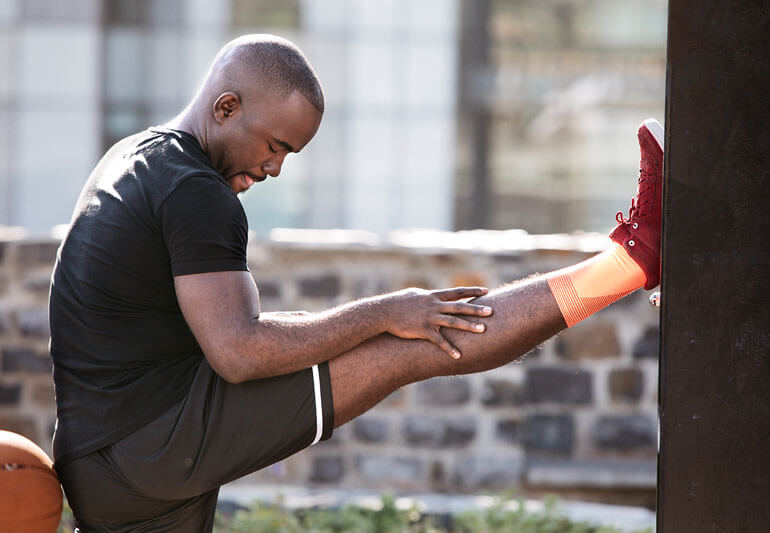The hip is one of the most mobile joints in the body, responsible for movement of the lower extremity. It also plays a significant role in stability as the largest weight bearing joint in the body. A healthy hip joint allows for mobility in daily life and in your favorite activities. This is especially important for those participating in exercise or sport activities that place significant stress on the joint. Hip pain can be extremely limiting and affect activity level and quality of life. Femoroacetabular Impingement (FAI), or hip impingement, is a condition seen most commonly in young (aged 20-40) high level athletes and active individuals. Depending on severity, impingement can dramatically affect the ability to live an active lifestyle. Learn more about FAI, its implications if left untreated, and treatment options by reading below!
Hip Joint Anatomy
The hip joint is a ball and socket joint, in which the rounded head of the thigh bone (femur) joins with the socket of the acetabulum (a part of the pelvis). This type of joint allows for mobility in multiple directions. There is a piece of cartilage called the labrum that lines the socket and helps the “ball” move within the “socket”, allowing for smooth motion. It also helps to maintain proper alignment. In cases of FAI, overgrowth of bone occurs on the femoral head and/or the acetabulum that causes the two to have abnormal contact which limits mobility. The bony abnormalities that cause FAI may be present at birth or developed over time. This is detrimental because it can cause pinching and (in severe cases) tearing of the labrum, as well as breakdown of the articular cartilage that lines the joint, potentially leading to osteoarthritis.
Symptoms of FAI
Common signs and symptoms of FAI include:
- Pain that develops gradually, especially along the front of the hip in the groin region or along the outside of the hip
- Pain along the thigh or buttocks or in the low back region
- Feeling of stiffness in the hip and/or groin, especially when performing bringing the leg or hip upwards, bending at the waist, or rotating the leg inward
- Pain after sitting for prolonged periods
- Feeling of locking, clicking, or catching in the hip
- Sharp pain when participating in athletic activities that involve running, jumping, and repetitive twisting and side to side movements
Treatments for FAI
It is important to treat symptoms of FAI as soon as possible, because the longer the condition goes untreated, the more damage will be done to the hip joint. Although FAI can be corrected with surgery, there are non-surgical interventions to explore that can effectively help to relieve less severe symptoms. Activity modification and rest are essential first steps to limit damage to the hip. Over the counter and prescription anti-inflammatory medications can help decrease pain and inflammation. Physical therapy is a conservative option that can help to reduce symptoms and improve hip mobility and overall function.
A physical therapist can develop a personalized plan of care to address your specific needs based on your impairments. Treatments may consist of:
- Stretching and strengthening of the hip and other indicated regions to reduce stress on the hip
- Joint mobilization to improve the hip’s range of motion
- Soft-tissue mobilization to decrease muscle tension and relieve pain
- Balance and functional training to prepare for return to activity
- Education on ways to modify activities and perform safe movements
If you believe you are experiencing hip impingement or have hip pain that limits your ability to participate in your daily, work, or exercise/sport activities, call Respire Physical Therapy at (703) 671-1871 or click here to schedule an initial evaluation and begin treatment today!
Tags: fallschurchva, Physical Therapy, movement freedom, Respire Physical Therapy, respirept, physical therapist, ptworks, sport injuries, hip pain, annandaleva, pain free living, choosept, hip impingement, arlingtonva, FAI pain, alexandriava, springfieldva, Hip Pain Relief



